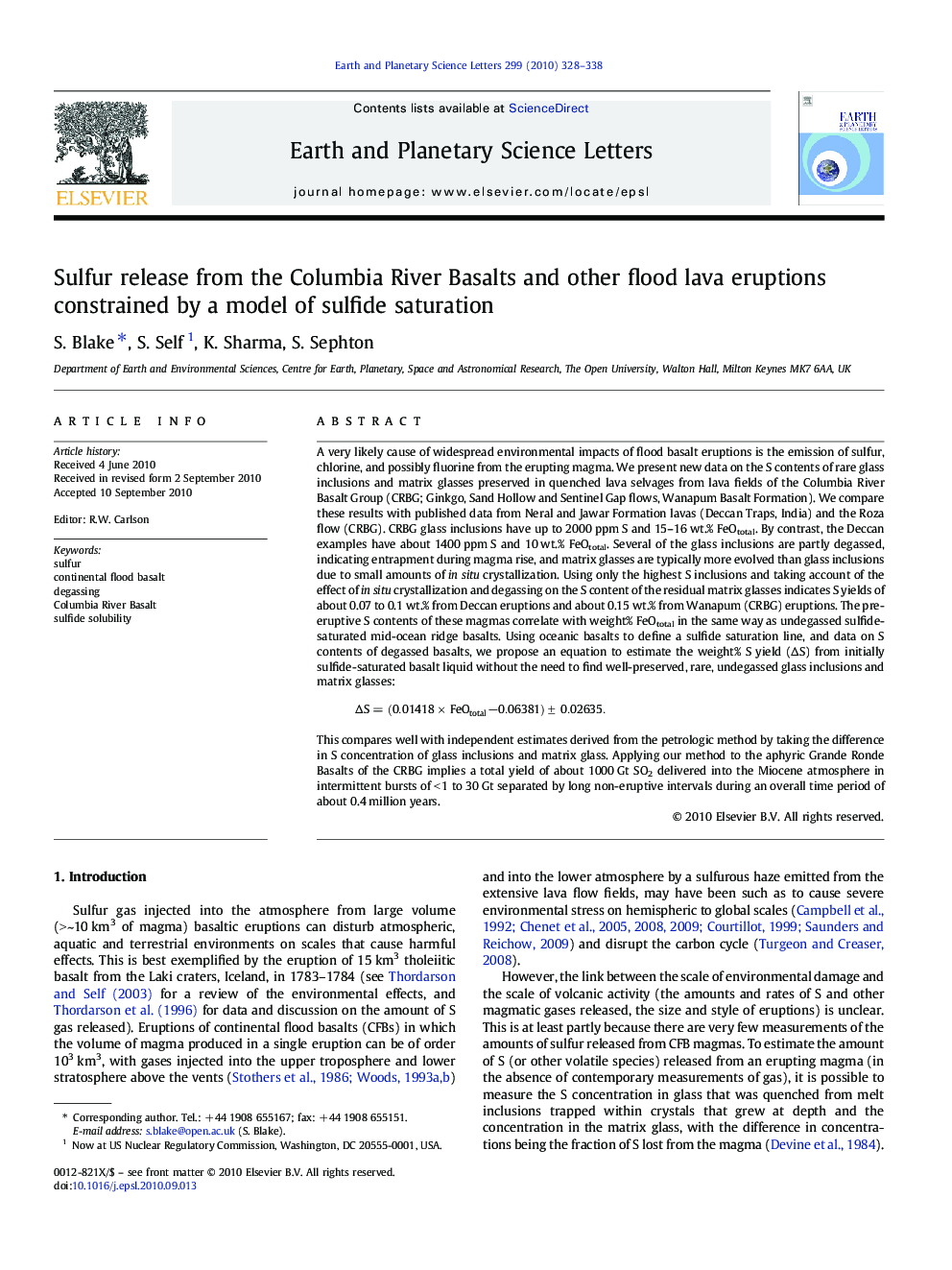| کد مقاله | کد نشریه | سال انتشار | مقاله انگلیسی | نسخه تمام متن |
|---|---|---|---|---|
| 4678304 | 1634841 | 2010 | 11 صفحه PDF | دانلود رایگان |

A very likely cause of widespread environmental impacts of flood basalt eruptions is the emission of sulfur, chlorine, and possibly fluorine from the erupting magma. We present new data on the S contents of rare glass inclusions and matrix glasses preserved in quenched lava selvages from lava fields of the Columbia River Basalt Group (CRBG; Ginkgo, Sand Hollow and Sentinel Gap flows, Wanapum Basalt Formation). We compare these results with published data from Neral and Jawar Formation lavas (Deccan Traps, India) and the Roza flow (CRBG). CRBG glass inclusions have up to 2000 ppm S and 15–16 wt.% FeOtotal. By contrast, the Deccan examples have about 1400 ppm S and 10 wt.% FeOtotal. Several of the glass inclusions are partly degassed, indicating entrapment during magma rise, and matrix glasses are typically more evolved than glass inclusions due to small amounts of in situ crystallization. Using only the highest S inclusions and taking account of the effect of in situ crystallization and degassing on the S content of the residual matrix glasses indicates S yields of about 0.07 to 0.1 wt.% from Deccan eruptions and about 0.15 wt.% from Wanapum (CRBG) eruptions. The pre-eruptive S contents of these magmas correlate with weight% FeOtotal in the same way as undegassed sulfide-saturated mid-ocean ridge basalts. Using oceanic basalts to define a sulfide saturation line, and data on S contents of degassed basalts, we propose an equation to estimate the weight% S yield (ΔS) from initially sulfide-saturated basalt liquid without the need to find well-preserved, rare, undegassed glass inclusions and matrix glasses:ΔS=(0.01418×FeOtotal−0.06381)±0.02635.ΔS=(0.01418×FeOtotal−0.06381)±0.02635.This compares well with independent estimates derived from the petrologic method by taking the difference in S concentration of glass inclusions and matrix glass. Applying our method to the aphyric Grande Ronde Basalts of the CRBG implies a total yield of about 1000 Gt SO2 delivered into the Miocene atmosphere in intermittent bursts of < 1 to 30 Gt separated by long non-eruptive intervals during an overall time period of about 0.4 million years.
Journal: Earth and Planetary Science Letters - Volume 299, Issues 3–4, 1 November 2010, Pages 328–338